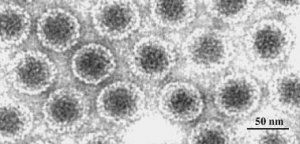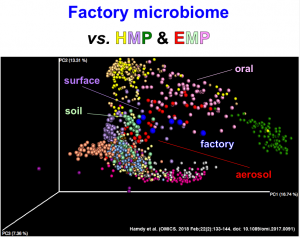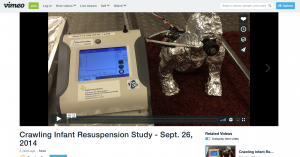A break from wastewater articles! “Longitudinal monitoring of SARS-CoV-2 RNA on high-touch surfaces in a community setting“. There’s not actually been a ton of articles about fomites recently… this appears less and less likely to be a source of transmission for SARS-CoV-2 although we certainly wouldn’t want to rule it out. It is, after all, …
Here’s the kind of article that we’ve been asking for since March… looking at the infectivity of SARS-CoV-2 on various surfaces (including paper money) under various conditions. I was excited when I saw the title and some of the media buzz about this paper. But then I looked a bit deeper. So “The effect of …
So here’s a bit of an odd “study”, published as a letter in the Journal of Hospital Infection about which the authors put out a press release as well. The title is “COVID-19 pandemic, let’s not forget surfaces”. No abstract since it’s a letter. Basically the authors took DNA from cauliflower mosaic virus, and inoculated …
This is a super-short preprint… just a letter and a few tables but contains some really useful information. The authors looked at the viability (not just viral RNA!) of SARS-CoV-2 under different conditions including various surfaces, temperatures, and with various disinfectants. Example good news: The virus is disinfected very readily Example bad news: They detected …
The story behind: Toward the Drug Factory Microbiome: Microbial Community Variations in Antibiotic-Producing Clean Rooms (OMICS. 2018 Feb;22(2):133-144. doi: 10.1089/omi.2017.0091.) PMID: 28873001 [Preprint] It was in 2013, on my return to Cairo University after a couple of years as a visiting scientist at UCSD, that I met Amal for the first time. Amal was a fresh master’s …
Rich Corsi was at UC Davis today giving a talk. The announcement for the talk with a summary is below: Living in a Material World: Why the Surfaces that Surround You Affect What You Breathe Richard L. Corsi, Ph.D., The University of Texas at Austin Environmental & Water Resources Fall Seminar Series Tuesday, October 3, …
Household air microbial community resembles that of household surface and occupant’s skin? Maybe, maybe not… By Marcus Leung (Twitter @leungmarcus) Indoor microbial communities, such as those found in indoor air and indoor surfaces, have been shown to be closely connected to microbial assemblages on humans. Also, re-suspension of house dust from surfaces following routine residential …
A few days ago, the FDA began issuing citations to cheese makers in New York State for the use of wooden shelves and boards for aging cheese, a practice that is permissible by state law and has been used for hundreds of years. Not surprisingly, this made a lot of people pretty angry. A Whitehouse.gov …
There was a recent flash in the news about the ‘5-second rule’ when a group of microbiologists at Aston University in the UK released results from a study (that, from what I can tell, is unpublished). The summary reads, “The study…monitored the transfer of the common bacteria Escherichia coli (E. coli) and Staphylococcus aureus from …
A recent microbe.net post discussed the use of copper as an antimicrobial to prevent infections in healthcare settings. This is not a particularly new concept, but unfortunately, the literature appears dominated by authors who received funding from the copper industry and its associations. Such industrial funding is not unique to copper and is, sadly, more …




